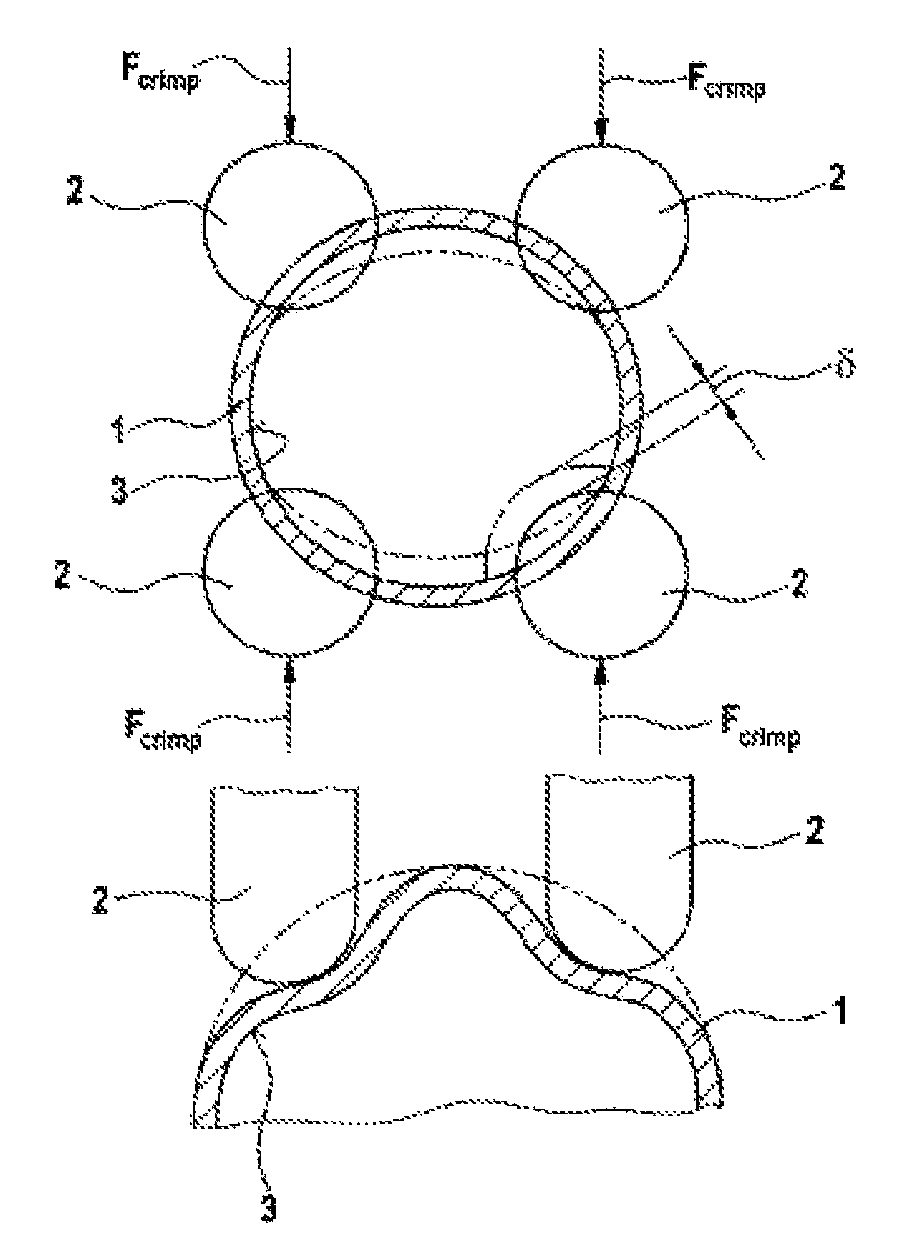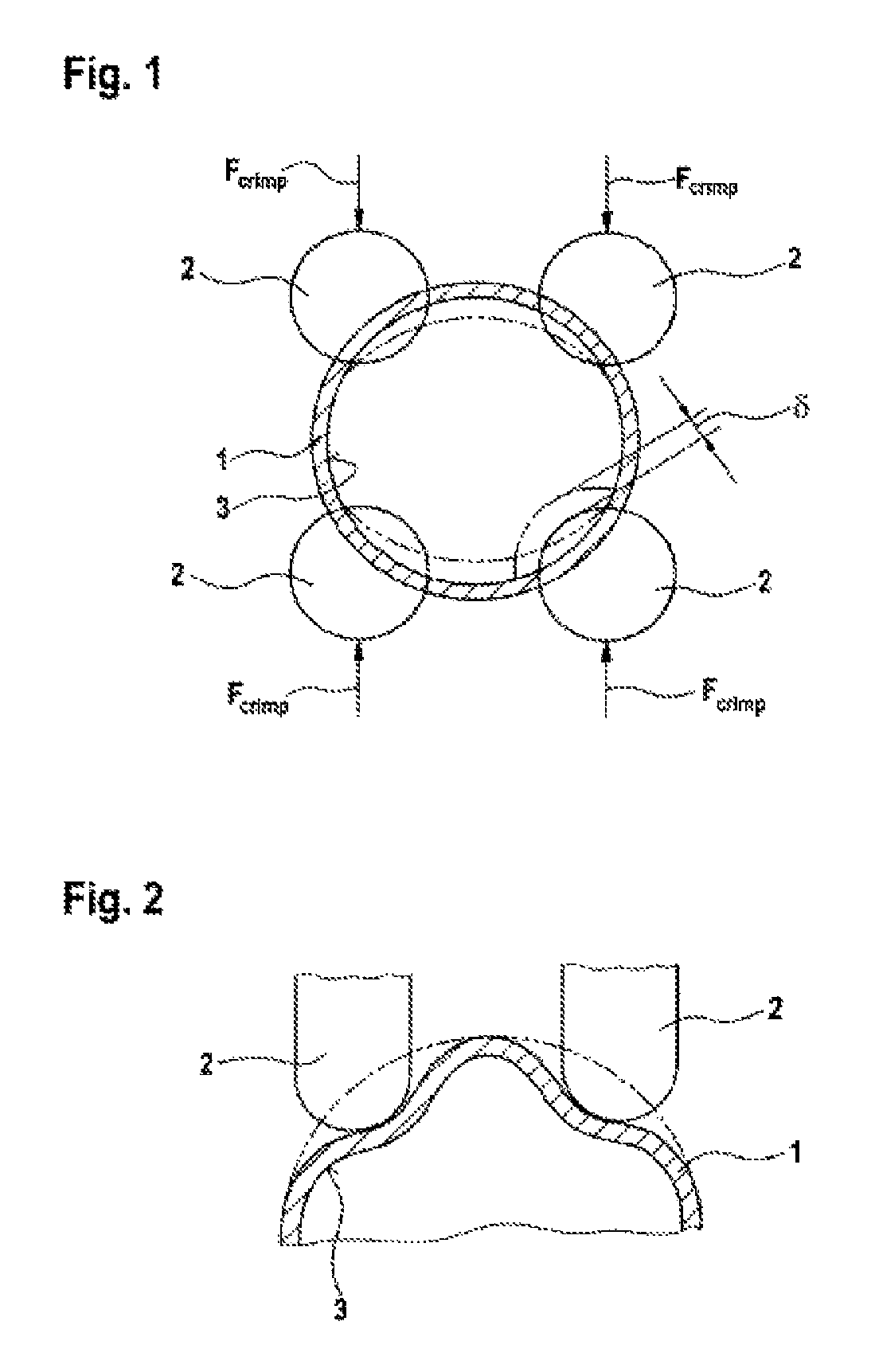Windshield wiper apparatus
a wiper and windscreen technology, applied in the direction of vehicle cleaning, couplings, manufacturing tools, etc., can solve the problems of internal stresses in respective workpieces, and affecting the crimping operation. , to achieve the effect of good dimensional stability of the bearing pin, good stress distribution, and increased tolerance zone for crimping operation
- Summary
- Abstract
- Description
- Claims
- Application Information
AI Technical Summary
Benefits of technology
Problems solved by technology
Method used
Image
Examples
Embodiment Construction
[0037]FIG. 1 shows a schematic cross-sectional illustration of a tubular support 1 of a windshield wiper apparatus (not illustrated specifically) for a motor vehicle.
[0038]A crimping tool which comprises four crimping punches 4 is arranged on the tubular support 1. The crimping punches 2 are arranged in such a manner that a springback is adapted to the crimping-induced deformation of the circular cross section of the tubular support 1, i.e. the springback 6 and the deformation are minimal.
[0039]In its original shape, the tubular support 1 has a circular cross-sectional area with an inner contour 3 which, by application of a force Fcrimp to the crimping punches 2, is deformed in regions such that, after the crimping operation, said inner contour assumes a shape as shown in FIG. 2. According to the prior art, a bearing pin is inserted into the tubular support 1 according to FIGS. 1 and 2, the cross-sectional area of which bearing pin is of substantially circular design and the outer c...
PUM
| Property | Measurement | Unit |
|---|---|---|
| contact angle | aaaaa | aaaaa |
| stress-optimized | aaaaa | aaaaa |
| deformation force | aaaaa | aaaaa |
Abstract
Description
Claims
Application Information
 Login to View More
Login to View More - R&D
- Intellectual Property
- Life Sciences
- Materials
- Tech Scout
- Unparalleled Data Quality
- Higher Quality Content
- 60% Fewer Hallucinations
Browse by: Latest US Patents, China's latest patents, Technical Efficacy Thesaurus, Application Domain, Technology Topic, Popular Technical Reports.
© 2025 PatSnap. All rights reserved.Legal|Privacy policy|Modern Slavery Act Transparency Statement|Sitemap|About US| Contact US: help@patsnap.com



